Stepping behind the bar is an exciting endeavor, but it comes with its unique language. Understanding bartending terminology and lingo is essential for new Bartenders aiming to thrive in their careers.
From mixing techniques to service expressions, mastering the lingo will not only help you communicate effectively with fellow staff and customers but also elevate your bartending game.
In this article, we’ll cover essential terms and phrases every new Bartender should know.
The Fundamentals of Bartending Terminology and Lingo
Before jumping into tools and drink preparation, it’s crucial to lay the groundwork with some basic bartending terms that are commonly used in the industry.
Learning these foundational terms can help new Bartenders navigate the bar environment more confidently:
- Well drink: A mixed drink made with the house's standard call spirits, typically at a lower price. This term often comes into play during busy hours when guests order quickly.
- Back: A non-alcoholic drink served alongside a spirit; for example, a soda or water served with whiskey. This term helps Bartenders ensure that guests have water or mixers ready to enhance their experience.
- Call drink: A cocktail made with a specific brand of liquor requested by the customer. Call drinks typically involve higher-quality ingredients than well drinks and require Bartenders to be familiar with a range of liquor brands.
- Mixology: The skill and art of crafting cocktails, including ingredient selection, preparation and presentation. Mixologists often focus on flavor balance and innovative drink designs.
- Garnish: An edible item added to a cocktail for decoration and flavor enhancement. Common garnishes include herbs, citrus and fruit slices.
- Muddle: The process of crushing ingredients, such as fruits or herbs, in the bottom of a glass to release their flavors. This technique is essential in drinks like mojitos and mint juleps.
- Highball: A term for a mixed drink served in a tall glass, typically consisting of a spirit and a larger proportion of a non-alcoholic mixer, such as soda or tonic water.
Tools of the Trade Terminology
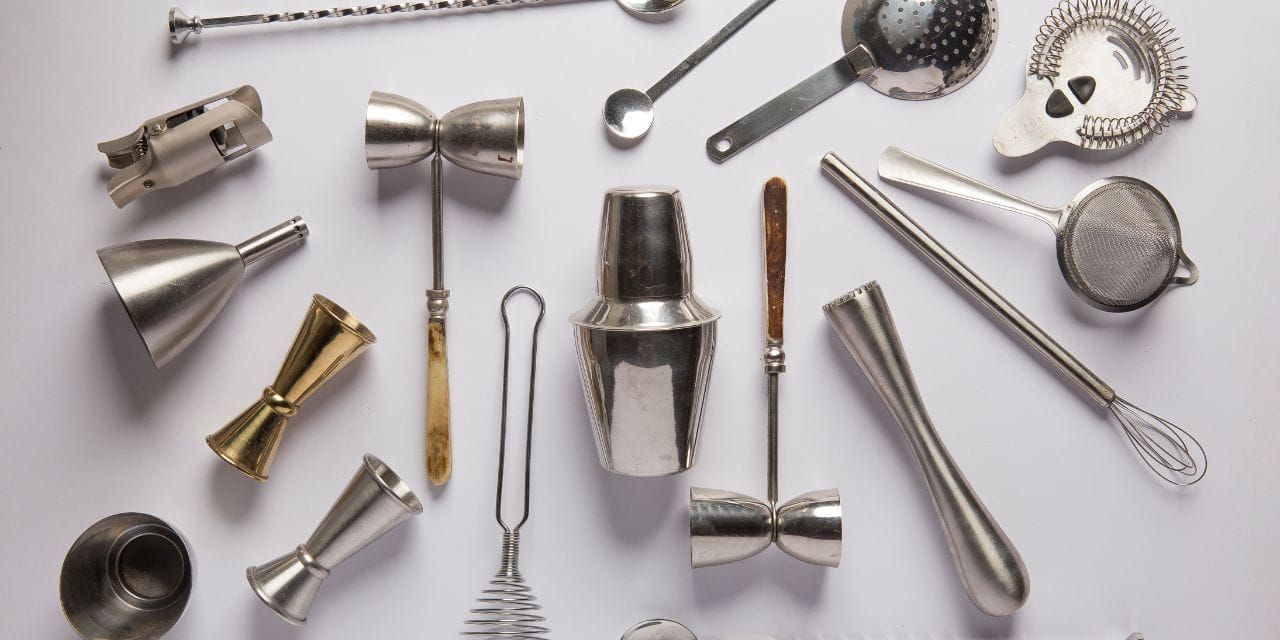
Getting to know your equipment is critical. Here are some essential bar tools you’ll often hear about:
- Boston shaker: A two-part shaker consisting of a metal shaker and a glass or tin used for shaking cocktails. Mastering this tool is essential for making smooth and well-mixed drinks.
- Bar spoon: A long-handled spoon used for stirring drinks and layering ingredients. It allows Bartenders to mix drinks without disrupting the visual effect of layered cocktails.
- Julep strainer: A strainer typically used alongside the mixing glass to prevent ice from pouring into a finished cocktail. This tool is crucial for maintaining the clarity and integrity of delicate cocktails.
- Cocktail muddler: A sturdy tool used to crush herbs and fruits, releasing their flavors for cocktails like mojitos and old fashioneds.
- Hawthorne strainer: A round strainer with a spring that fits over the shaker or mixing glass, used to filter out ice when pouring cocktails.
- Weights or cocktail jiggers: Other types of measuring tools that allow for precise measurement of ingredients, crucial for consistency in drink preparation.
- Bottle pour spouts: Used for easy pouring from bottles, ensuring a steady and controlled flow of liquid while reducing spillage and waste.
Glassware terms
The type of glass you use can affect the overall presentation of a drink. Knowing the specific terms related to glassware ensures that each cocktail is served appropriately.
- Chilled glass: A glass that has been cooled beforehand, enhancing the drinking experience for cocktails typically served cold. Chilling the glass ensures that the drink maintains its temperature longer.
- Float: Pouring an ingredient on top of another in a layered manner. This technique is often used for ingredients like cream or liqueurs to create visually appealing drinks.
- Collins glass: A tall, straight-sided glass ideal for serving refreshing long drinks like Tom Collins or gin and tonic.
- Highball glass: A versatile glass type commonly used for mixed drinks served with a larger volume of mixer, such as whiskey and soda.
- Rocks glass: Often used for spirits served neat or on the rocks; also suitable for cocktails like the Old Fashioned.
- Coupé glass: A small, rounded glass used for serving cocktails such as Manhattans and Daiquiris, known for its elegant appearance.
- Snifter: A short glass with a wide bowl, typically used for serving spirits like brandy or whiskey, allowing the drink’s aroma to be more pronounced.
Cocktail Preparation Terminology
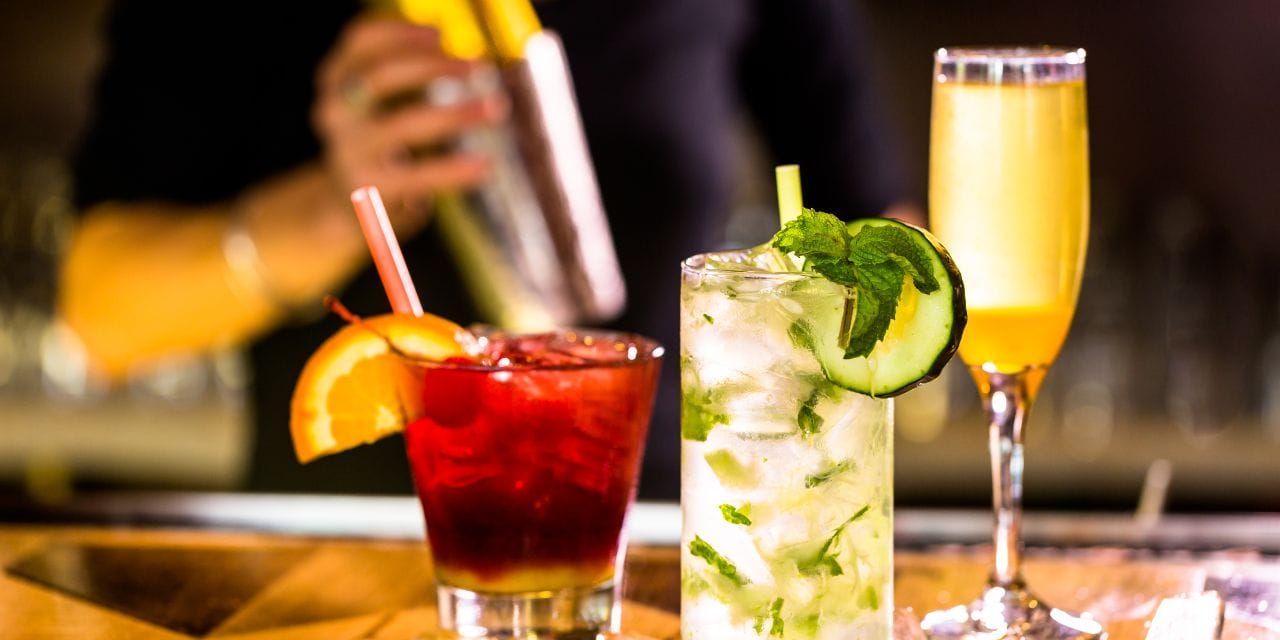
Mastering the terminology related to cocktail preparation is essential for any Bartender looking to craft quality drinks. Here are some key methods and terms you should be familiar with in the art of cocktail preparation:
- Shaking: Vigorously mixing ingredients in a shaker to chill and integrate flavors. This technique is essential when using cocktails that contain juices or cream.
- Stirring: Gently combining ingredients in a mixing glass using a bar spoon to maintain clarity. Stirring is often used for spirits that are meant to remain clear and undiluted.
- Muddling: The process of crushing ingredients like herbs or fruit to release their flavors into a drink. Muddling is a key technique for drinks like mojitos, where fresh mint is essential for flavor.
- “Straight up”: A drink chilled and served without ice, typically in a coupe glass. This term is crucial for customers wanting to enjoy their cocktails at the optimal temperature.
- “Build”: The method of layering ingredients directly into the glass instead of shaking or stirring them first. Knowing how to properly build a drink can create visually striking cocktails.
- “Wet”: Refers to adding extra mixer or dilution, such as a "wet martini," meaning more vermouth is included. Understanding this term helps create drinks tailored to customer preferences.
- Twist: A strip of citrus peel twisted over a drink to release its oils, often used in cocktails like the martini. This adds a fragrant aroma that complements the flavors.
- Rim: To coat the edge of a glass with a flavorful substance, such as salt or sugar, typically seen in margaritas. Rimming the glass also provides an added flavor experience with each sip.
- Garnish skewers: Small decorative sticks used to hold garnishes together, such as olives, cherries, or citrus slices, making drinks easier to consume and more visually appealing.
- Citrus wheel: A round slice of citrus, like a lemon or lime, often placed on the rim or submerged in the drink. This garnish provides additional zest and is commonly used in cocktails like gin and tonic.
- Bitters: While technically a flavoring agent, bitters are often used as a garnish due to their aromatic qualities. A few dashes can be expressed on the top of a drink for added flavor complexity and a decorative touch.
Spirits Terms
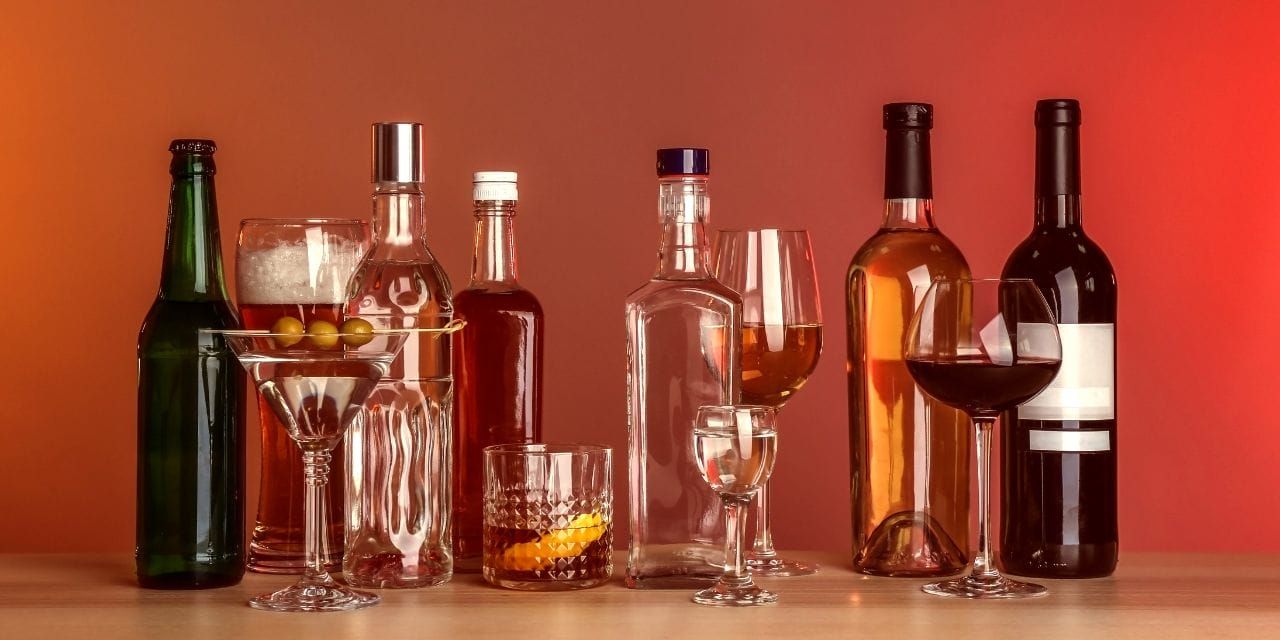
While you may already be familiar with common spirits, there are specific terms associated with them that are vital for effective communication.
Key terms to know include:
- Call brand: A specific brand of liquor requested by a customer, such as “Tito’s” vodka. Knowing how to identify various call brands helps you quickly fulfill orders and offer recommendations.
- Top shelf: Refers to high-quality or premium spirits that are often priced higher. While serving these brands, it's essential to convey their unique qualities to customers.
- Neat: A way of serving spirits that involves pouring them straight from the bottle into a glass without ice or mixers. This presentation allows the customer to fully experience the spirit's flavor and aroma.
- On the rocks: This term refers to a drink served over ice, ideal for those who prefer their spirits chilled and slightly diluted. Understanding the customer's preference for serving style is vital for ensuring their satisfaction.
- Aperitif: A type of drink served before a meal to stimulate the appetite. Recognizing popular aperitifs can help you recommend options to customers looking for a light refresher before dining.
- Digestif: A drink served after a meal, often herbal or strong in flavor, meant to aid digestion. Recognizing the distinctions between aperitifs and digestifs can guide you in curating drink pairings with meals.
- Liqueur: A sweet, flavored spirit with lower alcohol content compared to standard spirits. Commonly used in cocktails, liqueurs can add complexity and sweetness, making them an essential part of a Bartender’s repertoire.
- Cask strength: A term referring to spirits that are bottled directly from the cask without dilution. These spirits often have a higher alcohol content and a more intense flavor profile.
- Fortified wine: Wine that has been enhanced with added spirits, such as vermouth or port. Understanding fortified wines can open up options for creating sophisticated cocktails.
Bar Management Terms
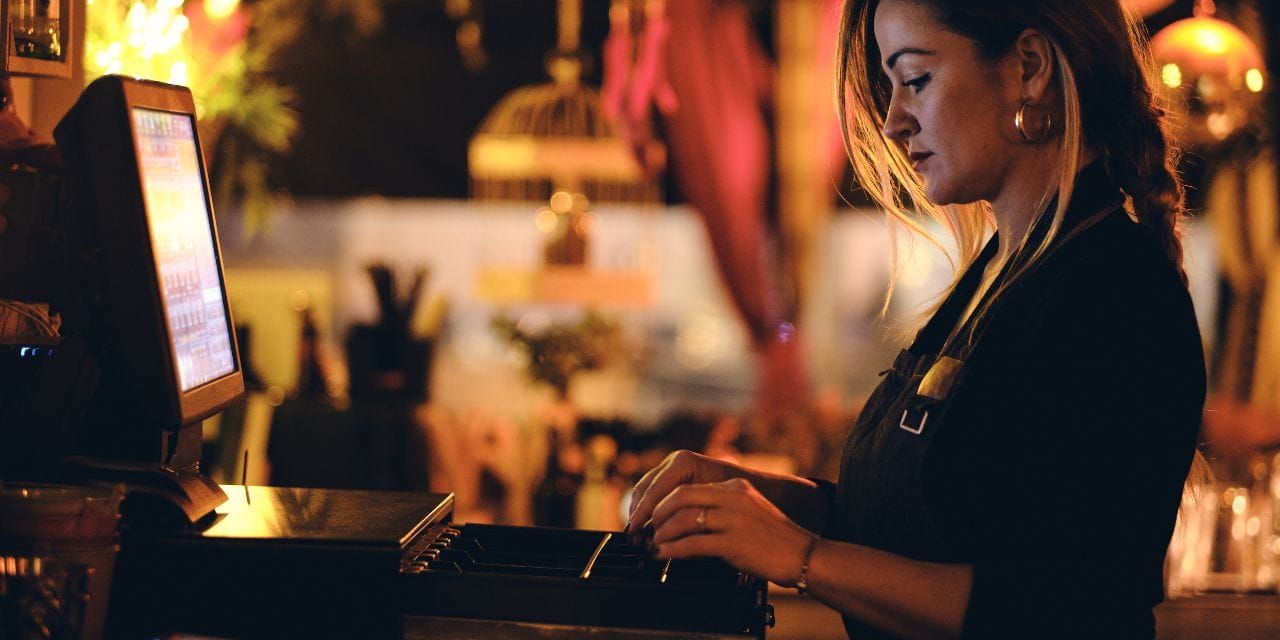
Management terminology plays an essential role in bartending and ensures that the bar maintains smooth operations. Understanding these terms will help you thrive in this unique environment.
Inventory management
Being aware of your stock levels is crucial to maintaining an efficient bar. Here are key terms you might encounter:
- Par levels: The minimum amount of a product that must be kept in stock to meet demand. Knowing par levels helps you plan how much to reorder and keep the bar running smoothly.
- First-in, first-out (FIFO): A method for managing stock that ensures older inventory is used before newer inventory, preventing waste and spoilage. Implementing FIFO is an essential practice for maintaining inventory quality.
- Stock turnover: A measure of how quickly products are sold and replaced over a given period. Understanding stock turnover helps Bartenders and Bar Managers optimize ordering practices and avoid running out of popular items.
- Inventory audit: A periodic check of the bar's inventory levels to assess stock accuracy and condition. Regular audits help identify discrepancies between recorded and actual stock, enabling better inventory management.
- Reorder point (ROP): The predetermined inventory level at which a new order should be placed to replenish stock before it runs out. Identifying reorder points helps ensure products are available when needed and minimizes interruptions in service.
- Breakage: Loss of inventory due to damage, spillage, or accidents. Monitoring breakage rates can help identify areas for improvement in handling and storage practices.
- Shrinkage: The loss of inventory due to theft, loss, or administrative errors. Understanding shrinkage can help Bartenders implement effective security and management strategies to protect against inventory loss.
- Inventory turnover ratio: A calculation that compares the cost of goods sold (COGS) to average inventory, indicating how efficiently stock is being utilized. This ratio provides insight into sales performance and inventory management effectiveness.
- Purchase order (PO): A document created when ordering stock, outlining the specific items being purchased, quantities and agreed-upon prices. POs help keep track of incoming inventory and facilitate accurate record-keeping.
- Stock rotation: The practice of organizing inventory in such a way that older items are used or sold first. Proper stock rotation helps minimize spoilage and maintain optimal product quality.
Service efficiency terms
Familiarizing yourself with common service efficiency terms will enhance your ability to work collaboratively with your team and ensure a seamless experience for guests. Here are some key terms to know:
- “On deck”: A term used to indicate the next drink being prepared; knowing what’s coming helps Bartenders stay organized and ready to serve.
- “86”: A phrase used to inform staff that an item is no longer available, whether it's an ingredient or a specific drink. This term is crucial for maintaining clear communication during busy shifts.
- “Last call”: A reminder to staff and patrons that the bar is nearing closing time. This term gives customers a final opportunity to place an order, while also allowing Bartenders to wrap up service efficiently.
- “Table turn”: A phrase that describes the process of serving new customers at a table as soon as the previous guests finish and leave. Understanding this concept helps Bartenders and Servers maximize seating capacity and improve overall service flow.
Tips for New Bartenders
As you begin your bartending journey, consider these essential tips for continuous improvement and success in the industry:
- Utilize available resources: Expand your understanding of bartending terminology and techniques. Look for literature focused on cocktail recipes and bartending skills. Classic books such as "The Joy of Mixology" or "The PDT Cocktail Book" are excellent resources to consult.
- Explore online education: Take advantage of many platforms that offer tutorials and professional bartending classes covering everything from basic cocktail making to advanced techniques. This can be a flexible way to learn at your own pace.
- Network with experienced Bartenders: Building connections within the industry is vital. Volunteer to shadow experienced Bartenders or participate in community bartending events to gain hands-on experience and insights.
- Stay informed about trends: The world of bartending is always evolving, so make it a habit to regularly update your drink menu knowledge. This will help you accommodate customer preferences and enable you to recommend new or seasonal offerings.
- Broaden your palate: Regularly try new spirits to expand your knowledge of flavors and brands. This practice will ensure you can make well-informed recommendations, ultimately enhancing your customers’ experiences with personalized suggestions.
Embracing a mindset of continuous learning will not only improve your skills but also contribute to your growth and success in the bartending profession.
Glossary of Bartending Terms and Lingo
Here’s a comprehensive glossary of all the Bartender terminology and lingo mentioned throughout the article, sorted alphabetically for easy reference:
- Aperitif: A type of drink served before a meal to stimulate the appetite. Recognizing popular aperitifs can help you recommend options to customers looking for a light refresher before dining.
- Back: A non-alcoholic drink served alongside a spirit; for example, a soda or water served with whiskey. This term helps Bartenders ensure that guests have water or mixers ready to enhance their experience.
- Barback: A support role responsible for restocking supplies and assisting Bartenders.
- Bar spoon: A long-handled spoon used for stirring drinks and layering ingredients.
- Bitters: A concentrated liquid made from herbs, spices and other botanicals designed to add complex flavors to cocktails. A few dashes of bitters can elevate the drink's profile.
- Bottle pour spouts: Used for easy pouring from bottles, ensuring a steady and controlled flow of liquid while reducing spillage and waste.
- Boston shaker: A two-part shaker consisting of a metal shaker and a glass or tin used for shaking cocktails.
- Boozy: A term to describe drinks with a high alcohol content.
- Breakage: Loss of inventory due to damage, spillage, or accidents. Monitoring breakage rates can help identify areas for improvement in handling and storage practices.
- Build: The method of layering ingredients directly into the glass without shaking or stirring.
- Call drink: A cocktail made with a specific brand of liquor requested by the customer. Call drinks typically involve higher-quality ingredients than well drinks and require Bartenders to be familiar with a range of liquor brands.
- Cask Strength: A term referring to spirits that are bottled directly from the cask without dilution. These spirits often have a higher alcohol content and a more intense flavor profile.
- Chilled glass: A glass that has been cooled beforehand, enhancing the drinking experience for cocktails typically served cold.
- Citrus wheel: A round slice of citrus, like a lemon or lime, often placed on the rim or submerged in the drink. This garnish provides additional zest and is commonly used in cocktails like gin and tonic.
- Coupé glass: A small, rounded glass used for serving cocktails such as Manhattans and Daiquiris, known for its elegant appearance.
- Collins glass: A tall, straight-sided glass ideal for serving refreshing long drinks like Tom Collins or gin and tonic.
- Cocktail muddler: A sturdy tool used to crush herbs and fruits, releasing their flavors for cocktails like mojitos and old fashioneds.
- Digestif: A drink served after a meal, often herbal or strong in flavor, meant to aid digestion. Recognizing the distinctions between aperitifs and digestifs can guide you in curating drink pairings with meals.
- First-in, first-out (FIFO): A stock management method ensuring older inventory is used before newer inventory to prevent waste.
- Fortified Wine: Wine that has been enhanced with added spirits, such as vermouth or port. Understanding fortified wines can open up options for creating sophisticated cocktails.
- Garnish: An edible item added to a cocktail for decoration and flavor enhancement. Common garnishes include herbs, citrus and fruit slices.
- Garnish skewers: Small decorative sticks used to hold garnishes together, such as olives, cherries, or citrus slices, making drinks easier to consume and more visually appealing.
- Hawthorne strainer: A round strainer with a spring that fits over the shaker or mixing glass, used to filter out ice when pouring cocktails.
- Highball: A term for a mixed drink served in a tall glass, typically consisting of a spirit and a larger proportion of a non-alcoholic mixer, such as soda or tonic water.
- Inventory audit: A periodic check of the bar's inventory levels to assess stock accuracy and condition. Regular audits help identify discrepancies between recorded and actual stock, enabling better inventory management.
- Inventory turnover ratio: A calculation that compares the cost of goods sold (COGS) to average inventory, indicating how efficiently stock is being utilized. This ratio provides insight into sales performance and inventory management effectiveness.
- Jigger: A tool used for measuring spirits accurately.
- Julep strainer: A tool for straining cocktails.
- Liqueur: A sweet, flavored spirit with lower alcohol content compared to standard spirits. Commonly used in cocktails, liqueurs can add complexity and sweetness, making them an essential part of a Bartender’s repertoire.
- Muddle: The process of crushing ingredients, such as fruits or herbs, in the bottom of a glass to release their flavors. This technique is essential in drinks like mojitos and mint juleps.
- Mixology: The skill and art of crafting cocktails, including ingredient selection, preparation and presentation. Mixologists often focus on flavor balance and innovative drink designs.
- Neat: A term used to describe spirits served straight from the bottle without ice or any mixers. This method highlights the spirit's true flavor and aroma.
- On deck: A term used to indicate the next drink being prepared; knowing what’s coming helps Bartenders stay organized and ready to serve.
- On the rocks: A drink served over ice. This term is commonly used for spirits and cocktails that are enhanced by chilling and slight dilution.
- Par levels: The minimum amount of stock that must be kept in inventory to meet demand.
- Reorder point (ROP): The predetermined inventory level at which a new order should be placed to replenish stock before it runs out. Identifying reorder points helps ensure products are available when needed and minimizes interruptions in service.
- Rocks glass: Often used for spirits served neat or on the rocks; also suitable for cocktails like the Old Fashioned.
- Shrinkage: The loss of inventory due to theft, loss, or administrative errors. Understanding shrinkage can help Bartenders implement effective security and management strategies to protect against inventory loss.
- Shot glass: A small glass for serving spirits in one quick gulp.
- Snifter: A short glass with a wide bowl, typically used for serving spirits like brandy or whiskey, allowing the drink’s aroma to be more pronounced.
- Shaking: Vigorously mixing ingredients in a shaker.
- Stock rotation: The practice of organizing inventory in such a way that older items are used or sold first. Proper stock rotation helps minimize spoilage and maintain optimal product quality.
- Stock turnover: A measure of how quickly products are sold and replaced over a given period. Understanding stock turnover helps Bartenders and bar managers optimize ordering practices and avoid running out of popular items.
- Straight up: A drink chilled and served without ice, typically in a coupe glass.
- Table turn: A phrase that describes the process of serving new customers at a table as soon as the previous guests finish and leave. Understanding this concept helps Bartenders and Servers maximize seating capacity and improve overall service flow.
- Twist: A strip of citrus peel twisted over a drink to release its oils. This adds a fragrant aroma that complements the flavors.
- Up-sell: Encouraging customers to order a more expensive item or an add-on.
- Well drink: A mixed drink made with the house's standard call spirits.
Advance Your Hospitality Career With OysterLink
As you embark on your bartending journey, mastering the bartending terminology and lingo is vital to your success.
Understanding these essential terms and phrases will not only enhance your confidence behind the bar but also improve your communication with customers and fellow staff.
For those looking to further their careers in the hospitality industry, consider utilizing platforms like OysterLink. OysterLink is a valuable resource for hospitality professionals, offering job opportunities, salary trends and industry insights.





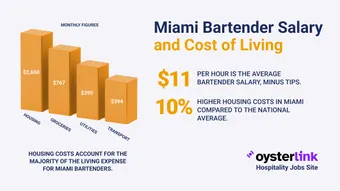

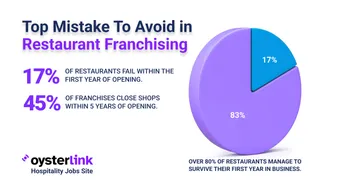
Loading comments...